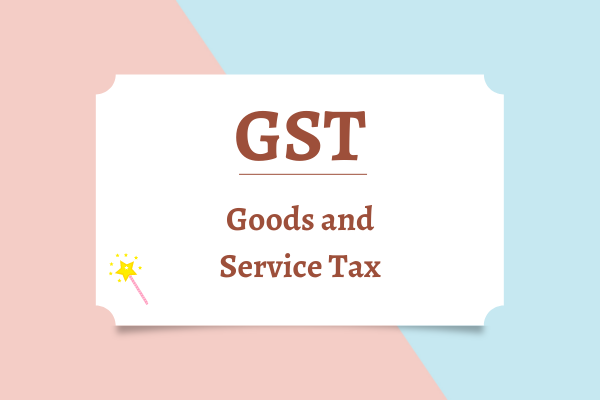GST’s full form is “Products and Service Tax”. It is difficult to set out the importance of GST and the meaning of GST with the model GST regulation without understanding the full type of GST.
GST Full Form & Meaning – Goods and Service Tax

GST Meaning
The Central Government passed the GST regulation in Parliament on March 29, 2017. GST is exacted on the stock of labor and products which are available under GST. The GST is a consumption-based charge charged by the Center that must be paid by each buyer in the inventory network. In addition, under the GST, a provider can guarantee Input Tax Credit (ITC) to set off the resulting risk. The duty gathered is sent to the Central Government, which then uses this source of income for the turn of events and organization of the country.
Significance of Global GST
GST’s full form is Global Goods and Service Tax. A few nations overall have been effectively taking on the GST system. The main country to carry out GST was France in 1954. Today, around 160 nations have embraced the possibility of GST. These incorporate the United Kingdom, Canada, Australia, Vietnam, Singapore, Spain, Brazil, Italy, Nigeria, and South Korea. Most nations allude to it as the VAT (Value Added Tax).
Worldwide, the GST has been taken on as a unified tax collection framework. One can infer that the duty rates are charged consistently on different labor and products all through the country. GST goes about as a consolidation or unification of the central and state tax assessment frameworks to be gathered as a solitary expense. This defeats the issue of cheating in specific circumstances and destroys expenses’ flowing impact and upgrades public cooperation and dependence.
Why has GST been carried out in India?
The central thought behind presenting GST was “One Nation One Tax”. Before the presentation of GST in India, there were various sorts of roundabout expenses. Some of them were:
- VAT (Value Added Tax)
- Luxury Tax
- Central Tax, etc
These expenses were imposed and gathered by various experts on State and Central levels thus, there was a duty on charge before the GST. Notwithstanding, after the presentation of GST, the system of aberrant tax assessment experienced a positive shock. India executed GST in July of 2017. The tax collection framework in India is bifurcated into fragments:
Direct Tax – This is a charge paid straight by an individual to the government where obligation lives on the individual and can’t be moved.
Indirect Tax: This is the tax charged on administrations and products and that is paid by implication to the public authority. Here the risk is moved to start with one element then onto the next.
Who is obligated to pay GST?
Each customer of the merchandise is obligated to pay GST until or except if it is an absolved/nonavailable inventory. In any case, it will be noticed that the enlisted provider needs to gather GST from the end consumer and transmit something similar to the Government through payment of duty gathered and recording of GST Return as appropriate.
How to work out GST?
To decide the GST rate for a specific decent or administration, you can utilize the HSN or SAC code. Then, at that point, duplicate this rate at the expense of the great or administration to ascertain the GST. Here is a model: The expense of frozen corn is 100, and the relevant GST rate on the frozen things is 5%. Then, at that point, the GST on a similar will be 100 × 5 ÷ 100, for example, 5 INR. Nonetheless, you can utilize our digital GST calculator for the equivalent, which is not difficult to utilize.